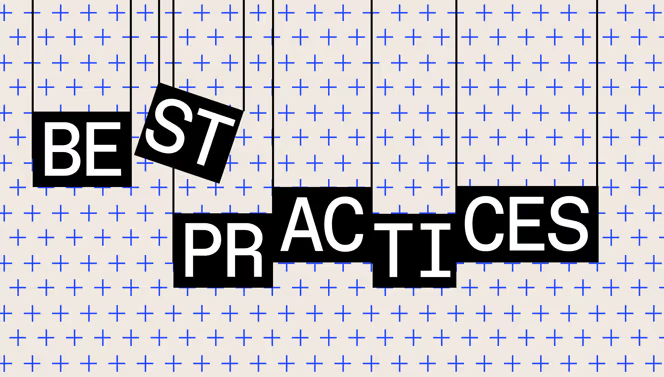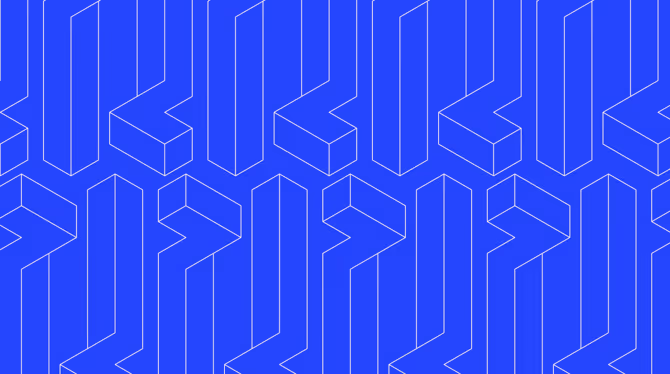Setup for success: 6 Ways to improve employee performance

Discover Workleap Officevibe's benchmark report on 12 key employee engagement metrics

In the world of business, there's a persistent challenge that every HR manager, team leader, and executive grapples with: how do you maximize your team's productivity and improve employee performance?
While there are no magic, quick fixes, worry not! Some strategies and techniques address employee performance issues, setting the stage for a more efficient and high-performing team, and your company's long-term success.
With performance management, we're stepping it up a notch. The principles we discuss in this article will not only help you rev up employee productivity but also boost employee engagement and create a workplace culture that encourages continued employee development.
Get ready to unlock your team's true potential so you can step into success together!
How performance management improves employee performance
Performance management isn't just another corporate buzzword — it's the linchpin that holds together a high-achieving team. It's a structured and dynamic process that empowers organizations to align individual employee goals with broader business objectives.
Through managing employee performance, you create a framework that ensures everyone in the organization is working toward the same target. This aligns individual and team goals with the larger objectives of the company and ensures that everyone is rowing in the same direction, maximizing efficiency and effectiveness.
This management approach also emphasizes ongoing feedback and development, fostering a culture of continuous improvement. This means employees are constantly working to enhance their skills and deliver better results — and their managers are supporting them every step of the way.
Most importantly, it provides a system of accountability, as every team member knows their role in achieving the organization's mission. This clear sense of responsibility encourages employees to perform to the best of their abilities.
Aligning goals, fostering continuous improvement, and nurturing a culture of accountability form the catalyst for propelling your team toward peak performance.
Defining high performance: Tailoring the meaning for your organization
Before we delve into strategies for improvement, it's essential to define what high performance means for your organization. This can vary significantly from one industry to another and from one team to another.
To set the stage for success, start by crafting a clear, specific definition of high performance that's tailored to your company's unique goals. This standard needs to be communicated to your employees, as part of the workplace culture.
This is further supported by customized expectations when it comes to skills, behaviors, and outcomes that are critical for success in your unique context. Establish measurable benchmarks that indicate high performance. This could be sales targets, project completion rates, or any relevant KPIs that you can track and measure consistently.
Because the definition of high performance might evolve as your company grows and adapts to new challenges, it's essential to conduct ongoing reviews and provide updates to ensure the standard remains relevant.
All in all, a clear definition of high performance customized to your organization is the cornerstone of success. By understanding the specific expectations, measurable benchmarks, and the necessity of ongoing review, you set the stage for a collective journey toward excellence.
The top 5 benefits of improved employee performance
Enhancing employee performance brings about a cascade of benefits for your organization and pulls together the collective strength of your team. When each team member performs at their best, your organization reaps numerous rewards:
- Increased productivity: High-performing employees are more productive. They accomplish tasks more efficiently and effectively, which in turn boosts the overall output of the organization.
- Greater innovation: High-performing teams are often more innovative as well. By encouraging employees to reach their full potential, they're more likely to contribute fresh ideas and creative solutions.
- Higher employee engagement: Employees who perform well and see the impact of their work are more engaged. They're enthusiastic about their jobs, leading to lower turnover rates and higher job satisfaction.
- Enhanced organizational reputation: High-performing teams produce superior results, which, in turn, enhances the reputation of the whole company. Clients and partners are more likely to trust and want to work with organizations known for their excellence.
- Competitive edge: Improved performance gives your organization a competitive edge in the market. You're then better equipped to respond to industry changes and challenges.
Striving for improved employee performance yields a wealth of advantages, not only for individual employees but for the organization as a whole!
6 Strategies on how to improve employee performance
Now that we understand the importance let's get right to the meat of it — how to improve employee performance. These strategies aren't theories. They're tried-and-trusted, actionable steps that can make a real difference in your workplace.
1. Benchmark employees to set a baseline
Before you can chart a course for performance improvement, you first need to know where you're starting from. Benchmarking involves assessing your employees' current performance level so you can later have something to measure employee performance metrics against.
There are various ways to do this, including:
- Key performance indicators (KPIs): Identify specific metrics that reflect employee performance in your industry or department. For example, this could be sales numbers for a specific period.
- Performance appraisals: Regularly evaluating employee performance provides insights into strengths and challenges, outside of quantitative data. This can help apply more nuanced considerations to set realistic benchmarks.
- 360-degree feedback: Collect feedback from peers, direct reports, and supervisors to get a well-rounded view, complementing KPIs or one-on-one review insights.
{emphasize}
📚 Add to your reading list: The 6 keys to improving and managing employee performance (backed by data)
{emphasize}
2. Analyze performance metrics
Now that you've set your benchmarks, analyzing performance metrics is essential for pinpointing areas that need improvement. Here's how to make metrics work for you:
- Identify key metrics: Determine which metrics directly align with your overarching organization's goals. Think about what directly affects employee performance vs what indirectly affects it.
- Regular tracking: Monitor performance metrics regularly, ideally in real-time, to identify trends and issues promptly. This can be done through assessment surveys or automatic performance-tracking software.
- Data-driven decisions: Numbers don't lie. So use data insights to inform your strategy for improvement with more objective precision and less bias.
{emphasize}
📚 Add to your reading list: Employee performance metrics: The savvy manager’s ultimate power tool.
{emphasize}
3. Improve employee onboarding, training, and support processes
Your employees are only as good as the tools and knowledge you provide them. That is the secret to employee productivity and improving employee performance. Investing in onboarding, continuous training, and comprehensive support systems is vital — especially in such a competitive landscape.
The right governance, processes, and technology ensure that your team is equipped with the tools, skills, and information they need to excel. It truly pays to invest in your people.
4. Be purposeful when you communicate
Communication isn't just about conveying passive information — it's about setting clear expectations, providing feedback, and creating a collaborative atmosphere.
Here are some golden rules for good communication:
- Set clear expectations: Ensure employees understand their roles, responsibilities, and performance expectations. That's why SMART goals are so effective.
- Give frequent feedback: Regularly communicate with employees about their performance, acknowledging successes and addressing areas for improvement.
- Create open channels: Create avenues for employees to voice concerns, ask questions, and offer suggestions. Good communication is a two-way street.
Clarity, constructive feedback, and ongoing support from managers are key to improving employee performance.
{emphasize}
Good communication is an art. And sometimes, how you deliver employee feedback makes all the difference in how it's received. Find tips on how to deliver great feedback here.
{emphasize}
5. Connect company values with performance
It's not just about tasks and targets — it's about values and vision. When you connect your company's core values with individual performance, a powerful synergy occurs. Employees begin to see how their daily contributions directly contribute to the organization's mission.
This alignment fosters a profound sense of purpose and motivation that goes beyond just getting the job done. It creates a workforce that's not only productive but genuinely passionate about achieving shared goals.
{emphasize}
Core values are the glue that keeps team members working synchronously and in harmony. Find our 4-step process for building a great team value system.
{emphasize}
6. Have the team fill out anonymous peer reviews
Want to unlock hidden potential and strengthen team dynamics? Anonymous peer reviews are your secret weapon. They provide a platform for employees to offer candid feedback and suggestions without the fear of personal bias or reprisal.
This level of transparency encourages open communication, helps identify performance blind spots, and nurtures a culture of mutual support. Implementing anonymous peer reviews can be the key to understanding what's working and where there's room for improvement within your team.
{emphasize}
Heard of the peer feedback loop? It's a peer-to-peer system growing in popularity that'll help your team members help each other.
{emphasize}
Why you should revamp your performance management tools and processes
While it's crucial to understand how to enhance employee performance, it's equally important to recognize the pitfalls of outdated methods. Sticking with legacy software and inefficient business processes can sometimes be detrimental to organizational success.
When goals are undefined, employees can't prioritize the right things
If your employees don't know where they're going, how do you expect them to get anywhere? All employees need clear objectives to navigate their roles effectively. Without defined goals, motivation dwindles, and performance suffers.
{emphasize}
From SMART goals to Locke and Latham's 5 principles, goal-setting is an art. Read here to amp up your goal-setting technique.
{emphasize}
Don't sweep underperformance issues under the rug — investigate!
Ignoring underperformance is like allowing a leak to persist. It might not seem disastrous at first, but over time, it can turn into a flood. If underperformance issues aren't addressed promptly, this can lead to a demoralized team and fixing bigger mistakes that are more expensive in the long run.
{emphasize}
We get it — tough conversations are, well, tough. But there are ways to constructively address underperformance concerns.
{emphasize}
Inefficient software hinders accountability
Employees need support from their leaders. However, without accountability from everyone, there may be challenges at every level. Outdated software and inefficient processes can hinder employees from being accountable for their work.
{emphasize}
Accountable employees are more motivated, responsible, and collaborative. Read here to learn how to create a culture of accountability and self-sufficiency within your own teams.
{emphasize}
Manage performance to encourage growth, not just results
Traditional methods often focus on performance reviews rather than managing performance. This effectively is like waiting for a problem to have happened rather than operating from a place of prevention. It's far more effective to manage performance continuously, adapting to needs as you go along, to foster growth and encourage continued employee development.
{emphasize}
While there may not be one right way to manage employee performance, there are certainly wrong ways to go about it. Read here for tips on bringing the best out of your team.
{emphasize}
Work with a framework: Create a performance improvement plan as needed
When you come across performance issues, it's vital to respond proactively. This involves crafting performance improvement plans (PIPs) that are custom-tailored to the specific challenges at hand. This not only assists team members in overcoming their challenges but also contributes to the overall effectiveness and success of your team and organization.
{emphasize}
We wouldn't leave you stuck with a blank canvas. Use or take inspiration from these handy performance improvement plan templates.
{emphasize}
6 Tips to help improve your employees' performance
Now, let's steer towards the brighter horizon of best practices. You don't necessarily have to adopt all these best practices, but they will help propel your team toward peak performance:
- Train and develop your team: Invest in your people, as they are the heart of your operations. Regular training and development opportunities are essential for staying competitive and ensuring your team operates at peak efficiency. Learning should be a continuous journey, so offer employee training opportunities year-round to keep your team's skills sharp and adaptable.
- Have open lines of communication: A team's success relies on clear and open lines of communication. Encourage feedback and collaboration, foster transparency, and create a culture where everyone's voice is heard.
- Reward and recognize your employees' performance: Acknowledging achievements is the secret to employee motivation and team morale. Rewarding and recognizing employee performance and dedication boosts employee satisfaction and inspires them to continue giving their best.
- Encourage feedback: Feedback is the ultimate weapon for success. It helps everyone navigate in the right direction, offering opportunities to course correct when needed. Encourage regular feedback sessions to identify areas for improvement and recognize accomplishments.
- Build a culture of well-being and support: Just as your office coffee machine needs regular maintenance to perform optimally, your employees need support for their well-being too. When employees feel their best, they perform their best. Promote a healthy work-life balance, mental health awareness, and a supportive work culture.
- Keep deadlines realistic: Setting achievable deadlines charts a realistic course. Unrealistic deadlines can lead to burnout and compromise quality. Ensure your team has the time and resources needed for success.
Enable employees with collaborative learning opportunities
In today's fast-paced world, learning is not a solitary endeavor but a collaborative voyage. Enabling employees with collaborative learning opportunities is akin to providing them with a fleet of ships to explore new horizons together.
Here's how it can improve employee performance:
- Knowledge sharing: Collaborative learning can encourage employees to share their insights, experiences, and expertise. When employees collaborate, they pool their collective wisdom, leading to better problem-solving and innovative solutions.
- Peer learning: Employees can benefit from peer learning. Collaborative environments foster mentorship and peer support, helping individuals grow their skills faster. When experienced employees guide newer team members, it's a win-win situation for everyone involved.
- Enhanced engagement: Collaborative learning keeps employees engaged. Interactive discussions, group projects, and teamwork make learning more enjoyable. Engaged employees are motivated to perform better, and their enthusiasm often translates into improved performance.
- Adaptability: The business landscape is constantly changing. Collaborative learning equips employees with the agility to adapt. They can quickly respond to new challenges, technologies, and industry trends. This adaptability is essential for maintaining peak performance in a dynamic and positive work environment.
- Building relationships: Collaborative learning builds strong relationships within your team. These bonds foster trust, effective communication, and teamwork, all essential for achieving collective and individual goals.
- Continuous improvement: Collaborative learning is a journey of continuous improvement. When employees engage in ongoing learning and collaborate with their peers, they contribute to a culture of continuous improvement, which is the cornerstone of sustained high performance.
Improving employee performance comes down to creating a solid performance improvement plan
In the dynamic landscape of modern business, improving employee performance is paramount. We've explored key strategies to achieve this, from setting clear performance standards to fostering a culture of support and learning. All are part of solid performance improvement plans.
Now, it's your turn. Take these principles, apply them within your organization, and witness the transformation. Remember, managing and measuring employee performance isn't just an HR function — it's a shared responsibility of leaders, managers, and employees. Use these insights to guide your team toward enhanced productivity, engagement, and, ultimately, success.
Give HR and managers the clarity, confidence, and connection to lead better every day.


%20(1).avif)


.avif)
.avif)








